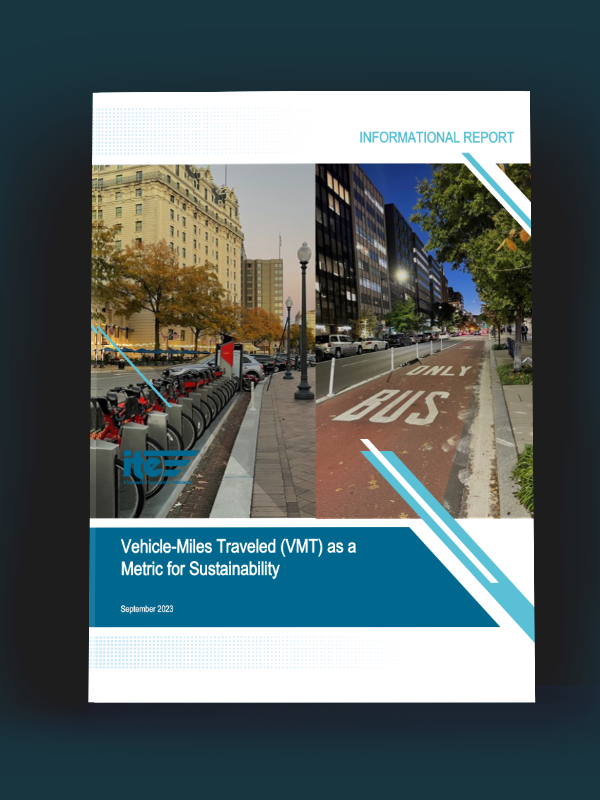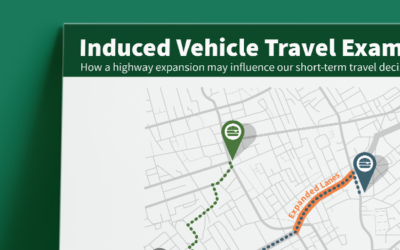Using VMT to Promote Sustainability
Using VMT to Promote Sustainability
As planning strategies evolve from vehicle-centric to a multimodal, accessibility-focused approach, the focus is on moving people efficiently over vehicles. The new paradigm emphasizes sustainable transportation modes and underscores the significance of Vehicle Miles Traveled (VMT) as a crucial metric. VMT reduction benefits traffic flow, infrastructure costs, community well-being, pollution reduction, non-driver accessibility, and public health.
We’re excited to introduce ITE’s new technical brief, Vehicle-Miles Traveled (VMT) as a Metric for Sustainability. This resource, which includes contributions from our nationwide VMT expert Ron Milam, covers the shift from vehicle-based planning to accessibility-based planning, providing insights and case studies for transportation agencies and practitioners striving to enhance equity, safety, environmental sustainability, and community livability.
share this article
Explore More
Turning Data into Transit Currency
See how three U.S. cities are using data-driven storytelling to connect transit to daily life, reshaping it into something people want to ride and invest in.
Olympic-Size Mobility
Olympic fever fills the air as Paris hosts the 2024 Games, welcoming millions of visitors. Meanwhile, Los Angeles gears up for the 2028 Olympics, focusing on improvements that will benefit the city long after the games end.
Induced Vehicle Travel Example
Here’s an example of how highway expansions influence our short-term travel decisions




